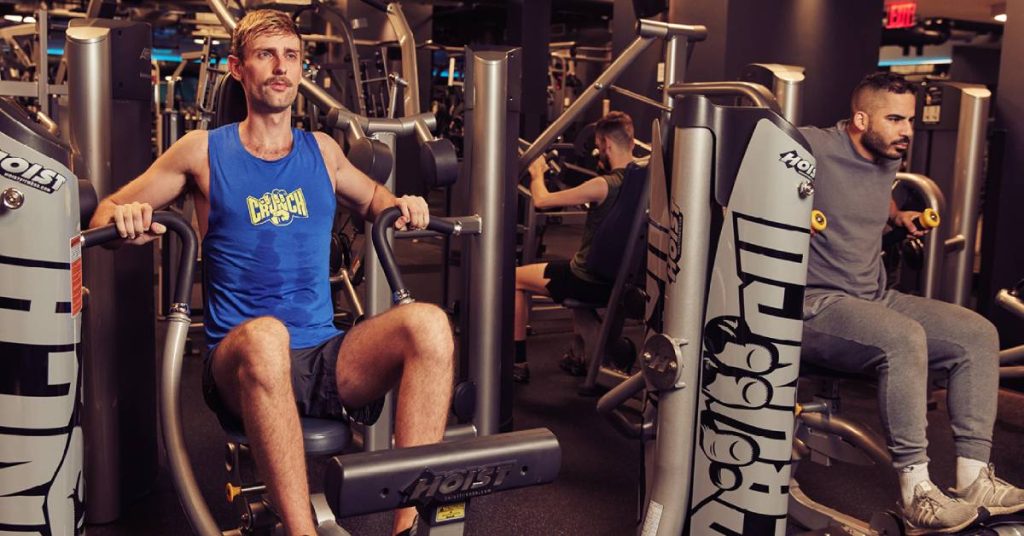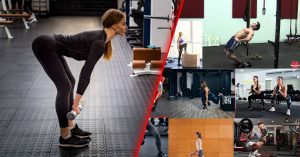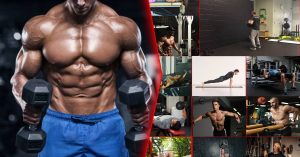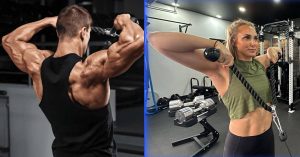Are you stuck in the endless cycle of cardio workouts with little to show for it? Are you searching for that key element to supercharge your fitness or bodybuilding journey? Look no further than the dynamic world of weight lifting equipment!
This guide is your ticket to understanding how these powerful tools can revolutionise your approach to fitness, whether you’re aiming to lose weight, tone muscles, or take your bodybuilding to new heights.
Gone are the days when cardio ruled the fitness realm. Today, weight training stands tall as a pivotal element in achieving a well-sculpted, healthy physique. It’s about more than just building muscle; it’s a pathway to a healthier, stronger you.
However, navigating the maze of weight training equipment can be daunting. Fear not! This article serves as your beacon, guiding you through the diverse landscape of weight lifting gear, unlocking the potential within each tool to accelerate your fitness goals.
Table of contents
MORE keyboard_double_arrow_down LESS keyboard_double_arrow_up
Why Weight Lifting? A Deeper Understanding
According to Grand View Research, the global fitness equipment market was valued at a staggering USD 16.04 billion in 2022, projected to grow at a CAGR of 5.3% from 2023 to 2030. This surge underscores the escalating importance of strength training.
Strength training counters age-related muscle loss, as noted by Mayo Clinic, and offers an array of benefits:
- Boosts Bone Density: It’s crucial in fighting osteoporosis.
- Aids in Weight Management: It increases metabolism, aiding in weight loss.
- Enhances Quality of Life: It improves daily activity performance and joint protection.
- Manages Chronic Conditions: Beneficial in addressing arthritis, back pain, and heart disease.
- Sharpens Mental Acuity: Particularly beneficial for older adults.
Dr. Michael Bracko, a renowned sports medicine expert, asserts, “Weight training is the single best thing you can do for your health, period.”
Furthermore, leveraging my years of experience in fitness and gym equipment, I aim to impart insights and practical advice on utilising weight lifting equipment effectively. Let’s embark on this transformative journey together.
Exploring the World of Weight Lifting Equipment
Weight lifting equipment is a cornerstone in the fitness and bodybuilding world. Each type of equipment is designed to target specific muscle groups and offers unique benefits. Let’s delve into some of the key types of weight lifting equipment and their roles in enhancing your workout regime.
Cable Lat Pulldown: A Back Muscle Sculptor
The cable lat pulldown is a staple in many gyms. Primarily targeting the latissimus dorsi – the large muscles on either side of your back – this machine involves pulling a weighted cable down to face level. It’s an excellent exercise for developing a strong, well-defined back.
Smith Machine Squat: Versatility and Safety Combined
This machine features an adjustable bar, typically weighing around 10 kilograms, within a secure frame. Ideal for both squats and bench presses, the Smith machine’s design allows you to lock the bar in place, providing a safer lifting environment, particularly for beginners.
Machine Hack Squat: Stability and Focus
Similar to the Smith machine, the hack squat machine guides your movements along a fixed path, eliminating the instability of free-standing squats. This specificity means it doesn’t engage stabilising muscles as much, but it offers greater control and safety, especially for those new to lifting.
Unilateral Low Pull: Targeted Muscle Engagement
This machine, resembling a paddle, features independent grips and a supportive chest pad. It allows for a downward pulling motion that effectively works the triceps, shoulders, and lats, mimicking a swimming stroke.
Seated Overhead Press: Strengthening Shoulders and Arms
Replacing the need for dumbbells or barbells, this seated workstation enables you to perform overhead lifts, like military or push presses, in a comfortable and controlled seated position.
Pull-Up or Chin-Up: The Ultimate Compound Exercise
A gym classic, the pull-up or chin-up bar can be a stand-alone installation or part of a larger setup. These exercises are fantastic for strengthening the back and arms, with varied grips adding different dimensions to the workout.
Seated Cable Row: A Focused Back Workout
In this exercise, you sit and pull a handle towards you, emphasising a straight back and engaged shoulder blades. This targets the latissimus dorsi muscles, and the weight can be adjusted to suit your fitness level.
Dumbbells: Versatile and Joint-Friendly
As noted by fitness experts Jenny Harris and Pete McCall, dumbbells are an excellent choice for strength building. Their non-fixed position allows for a more natural range of motion, making them a joint-friendly option.
Barbells: Beyond Bodybuilders
Barbells aren’t just for Olympic lifters or bodybuilders. They’re incredibly versatile, suitable for exercises like back squats, deadlifts, and snatches. The ability to add significant weight makes them a valuable tool for progressive strength training.
Body Bars: A Beginner-Friendly Alternative
These foam rubber-covered iron bars offer a lighter and more approachable version of standard barbells. They’re great for beginners or as warm-up tools for more experienced lifters preparing for heavier barbell exercises.
Expert Insights on Using Weight Lifting Equipment
When it comes to weight lifting, it’s crucial to approach it with knowledge and respect for the process. Understanding how to use each piece of equipment effectively and safely is key to maximising your gains and preventing injuries.
Stay tuned for expert opinions and direct quotes on best practices in weight training. In the next section, we’ll dive deeper into expert advice and insights, ensuring you’re equipped with all the knowledge you need to make the most of your weight lifting journey.
Navigating the Weight Room: Expert Advice for Safe and Effective Training
Weight lifting is a potent tool for muscle building, strength enhancement, and overall health improvement. However, the key to reaping these benefits lies in the correct usage of weight lifting equipment. Let’s explore some essential tips from experts in the field to ensure you train safely and effectively.
1. Choosing the Right Equipment for Your Goals
Select weights that align with your current strength level. Avoid starting too heavy to prevent injury. Incorporate different types of equipment to engage various muscle groups. This varied approach can include barbells, dumbbells, kettlebells, weight machines, and resistance bands.
2. The Importance of Proper Form
Learning and maintaining proper form is critical to target the intended muscles and prevent injuries. Utilise online resources or gym instructionals for guidance. Consider working with a personal trainer to refine your technique and get personalised feedback on your form.
3. The Role of Warm-Up and Cool-Down
A thorough warm-up, including light cardio and dynamic stretches (like lunges and arm circles), primes your muscles for the workout ahead. Cooling down with static stretches aids in muscle recovery and helps to alleviate soreness.
4. Listening to Your Body’s Signals
Especially as a beginner, heed any signs of pain and avoid overexertion. Allocate sufficient rest between workouts, particularly for the same muscle groups, aiming for at least 48 hours of recovery.
5. Progressing at a Safe Pace
Resist the urge to rapidly increase weight amounts. A steady progression is more sustainable and reduces injury risk. Monitor your strength improvements and adjust your training accordingly to ensure continued progress.
Expert Perspective from Layne Norton
Dr. Layne Norton, a renowned physique athlete and coach, emphasises the principle of progressive overload for muscle growth and strength. As you can see in the below image, on his Instagram, he states, “If you want to build muscle and get strong, you must FORCE adaptation. This is done through progressive overload.”

Source: Instagram @BioLayne
This advice underscores the importance of continually challenging your muscles to see tangible results.
Practical Tips for Effective Weight Lifting
When it comes to weight lifting, consider these tips:
- Prioritise compound exercises like squats and deadlifts.
- Utilise a weightlifting belt for lower back exercises to ensure safety and effectiveness.
- Opt for comfortable, flexible workout attire and shoes.
- Stay hydrated and nourish your body adequately.
- Don’t hesitate to seek help for using equipment or performing exercises correctly.
Busting Common Myths About Weight Lifting Equipment
Weight lifting equipment is often surrounded by myths and misconceptions. Let’s debunk some of these common myths to provide a clearer understanding of the benefits and realities of using weight lifting equipment.
Myth 1: Exclusive to Bodybuilders
Weight lifting equipment is incredibly versatile and beneficial for everyone, regardless of fitness goals. It’s not just for those looking to build massive muscles. Regular weight lifting improves bone density, metabolism, and energy levels, making it a valuable addition to any fitness regimen.
Myth 2: Guaranteed Bulkiness from Heavy Weights
Muscle growth is influenced by genetics, diet, and the specificities of your training program, not just by lifting heavy weights. You can develop toned, strong muscles without gaining excessive bulk by focusing on moderate weights and higher repetitions.
Myth 3: The Superiority of Weight Machines Over Free Weights
Both free weights and weight machines offer unique benefits. Free weights provide flexibility and engage a broader range of muscle groups, enhancing functional strength.
Weight machines, on the other hand, offer more controlled movements, making them ideal for beginners or those targeting specific muscles. The choice should be based on personal fitness goals and preferences.
Myth 4: Inherent Injury Risk with Weight Lifting Equipment
Safe and effective weight training hinges on proper form, appropriate weight selection, and gradual progression in your workouts. Injuries are not a given with weight lifting equipment; they can be significantly minimised or avoided by following these principles. A personal trainer or fitness expert can offer invaluable guidance in this regard.
Myth 5: Weight Lifting Neglects Cardiovascular Health
Contrary to popular belief, weight lifting can positively impact your cardiovascular health. Exercises involving weights can increase your heart rate and oxygen consumption, contributing to cardiovascular fitness, especially when combined with regular aerobic activities.
By dispelling these myths, we can approach weight lifting equipment with a better understanding and appreciation of its diverse benefits. Whether you’re a beginner or an experienced lifter, incorporating various types of weight lifting equipment into your routine can be a game-changer for your overall fitness and health.
Wrapping Up
Weight lifting equipment isn’t just a tool for bodybuilders; it’s a game-changer for anyone aiming to sculpt their body, lose weight, or elevate their fitness regime. Remember, the right equipment, used correctly, can be your ally in achieving your fitness aspirations.
FAQs
- What’s the best starting equipment for beginners?
Dumbbells and body bars are great starting points due to their versatility and ease of use. - How often should I use weight lifting equipment?
How often you should use weight lifting equipment depends on your fitness goals and schedule, but generally 3-4 times a week is effective. - What gym equipment is strength training?
A few gym equipment that helps to strength train include free weights, barbells, and dumbbells for functional movements that go beyond a fixed plane of movement. - Are weights better than machines?
In general, free weights help to use more muscles in comparison to machines. Due to this they are better for muscle building in the long run. - Is weight lifting effective?
Yes, lifting weights can help you lose or manage weight. It also helps to increase metabolism to help you burn more calories.
References

ABOUT THE AUTHOR
Follow Valen Steven for a dose of fitness enthusiasm, evidence-based advice, and a roadmap to achieving your health and wellness goals.
Subscribe to our Newsletter
Dive into a world of fitness and wellness with our exclusive newsletter! Sign up now and receive weekly power-packs of fitness wisdom




